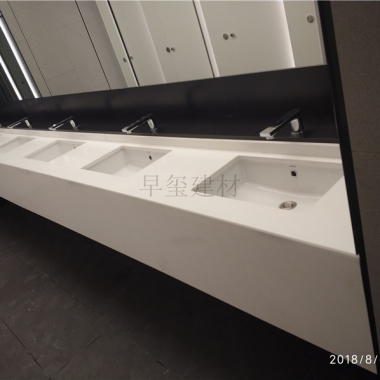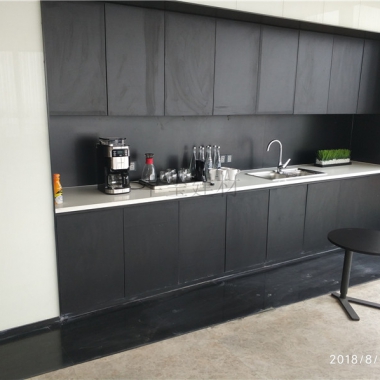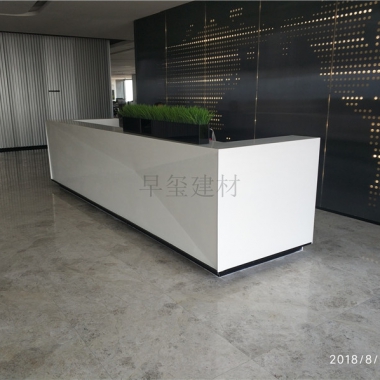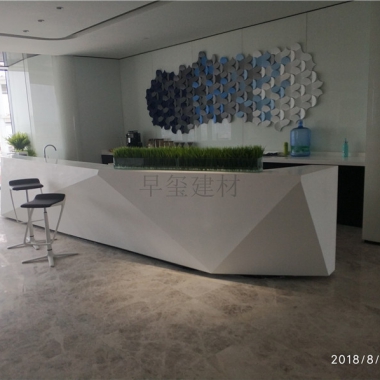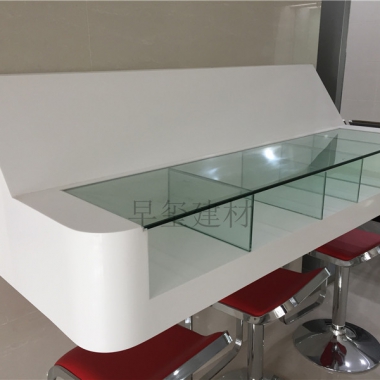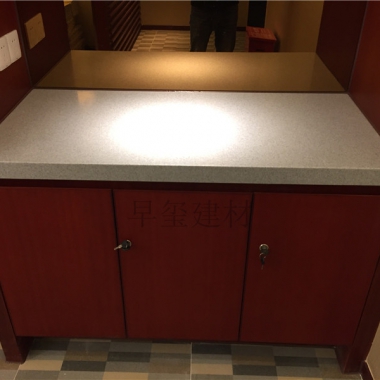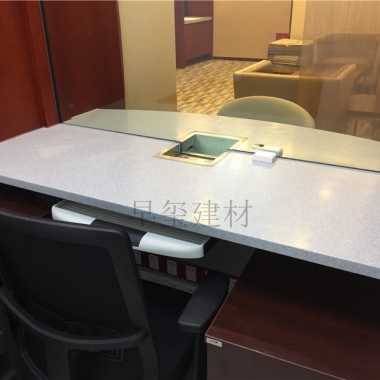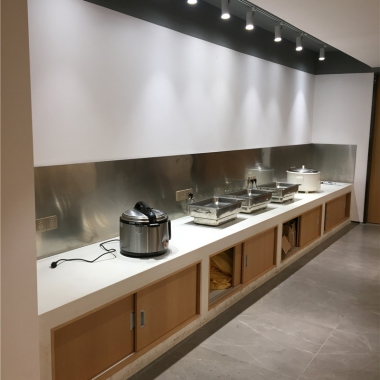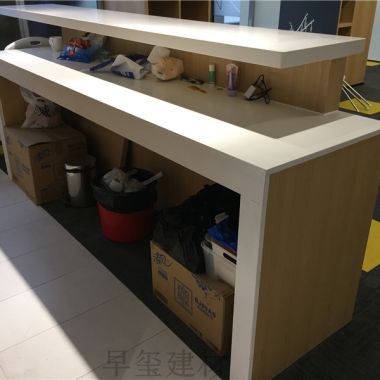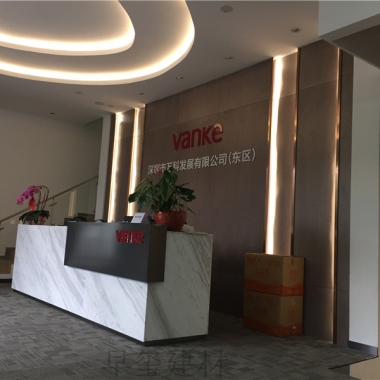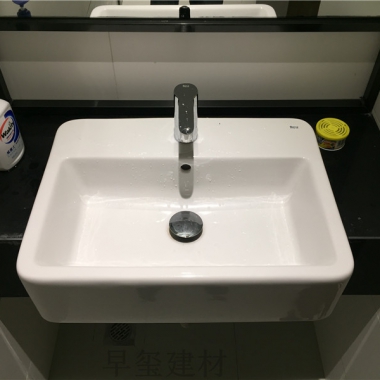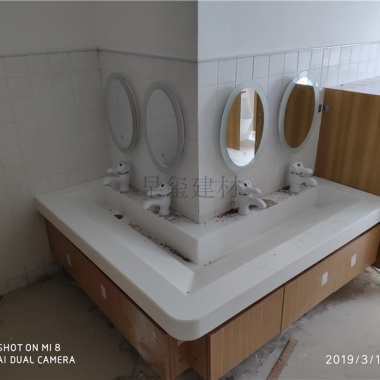Artificial stone knowledge: How is artificial stone formed?
The synthetic stone technology of Italy (BRETON) basically represents the basic direction of synthetic stone in the world today. It is introduced as follows:
(1) Raw material preparation and ingredients:
1 The stone block, gravel slag and coarse marble powder are arranged in the hopper according to the design ratio, and the weighing belt is used to weigh the ingredients.
2 Store the coarse powder and fine powder in a vertical silo and deliver it to the mixer at the specified quality.
3 The white cement is stored in the vertical warehouse, and after the predetermined quality is weighed, the gate is opened and sent to the mixer.
4 The resin is placed in a resin tank and is metered into the mixer during use.
5 The catalyst, accelerator and antifoaming agent are respectively stored in a stainless steel container, and are proportionally injected into the mixer by a metering pump as needed.
6 Pigments are crushed, weighed and pre-stirred in a special container and poured into a blender.
7 If cement is used as the binder, the water source should be prepared, and the water volume should be controlled by electronically controlled pneumatic valves (the rest are the same as 1~6).
(2) Stirring of raw materials
1 Stirring of artificial marble raw materials The various stones are directly poured into the vacuum mixer according to the designed proportion, and then the binder (cement or resin) is stirred in advance to form a paste, poured into a vacuum mixer and stirred uniformly and vacuumed.
Two people caused the mixing of granite raw materials. Two kinds of raw materials of different colors were placed in two sets of planetary mixers, pre-stirred evenly, and two kinds of stones were scattered on the rotating disc. The two layers are formed obviously, and then discharged onto the conveyor belt with a certain height drop, so that the two color materials are properly mixed, and finally sent to a vacuum mixer for a little mixing to perform vacuuming.
In order to realistically imitate natural granite, several colors of stone can also be used in the mixing.
(3) synthetic stone
Pressurize and vibrate under vacuum to discharge the air as much as possible, then put it into the mold to pressurize, vibrate, and vacuum again in the vacuum chamber. After a certain period of time, the mold car exits the vacuum chamber for curing. Resin (organic synthetic stone) generally needs to be cured for 7 days, cement (inorganic synthetic stone) needs to be cured for 7 days (20 ° C); natural curing requires 15 days. The mold can then be removed and sawed.
(4) Processing of sheet metal
The method is the same as the processing method of natural stone, and it also needs to be cut, milled, polished, and protected. In order to improve the quality of the synthetic stone, it is necessary to grind the cut surface to achieve a smooth and smooth surface. The mixture of resin and calcium powder is mainly applied to the stone surface. It is necessary to pay attention to the difference in color as much as possible after hardening. Polishing, final trimming, chamfering, acceptance.
The synthetic stone with a diameter of 2.5 mm or less is also called the microcrystalline series or the granite series due to the difference in the particle size of the stone to be used; the amphibolite having a particle diameter of 120 mm or less and 2.5 mm or more is cut. Can exhibit large phenocrysts. From the binder, it is divided into two types: resin (organic) type and cement (inorganic) type. The newly developed synthetic stone adjusts the particle size ratio of the stone and adjusts the color of the binder under the existing process; adds shells, broken glass, broken mirrors, animal fossils, non-metallic minerals such as mica, pearlescent in the aggregate. Mica chips, hard plastics, etc., can make the synthetic stone varieties more colorful. Due to the poor density of synthetic stone (cement) and stone bonding, and the presence of air (bubbles), the weather resistance of synthetic stone is much lower than that of natural stone. Synthetic stone is especially difficult to apply outdoors. Special attention should be paid to the selection of materials for the project. Synthetic stone is a good method for comprehensive utilization of natural stone scraps and scraps. It has been widely developed in stone developed countries.
Yucci irregularly released a variety of artificial stone knowledge to our customer!
About
Yucci brand is one of the world's leading innovator in solid surface manufacturing.With the ability to be manufactured as sheet materials in a variety of widths, textured wall panels and an extensive range of shape styles and finished products. Yucci products have a multitude of applications for commercial and residential architectural projects.
MoreNews
Contact
- Room 412, 4th Floor, Jinma Commercial Center, No.750 Minzhi Street, Longhua New District, Shenzhen, Guangdong, China
- Mr Neal +8615989851076
- 3599710075@qq.com

